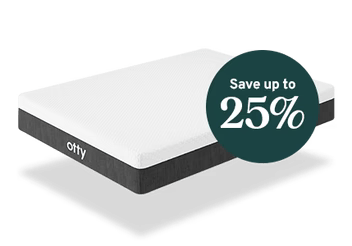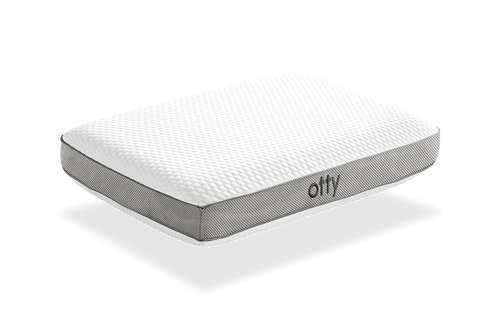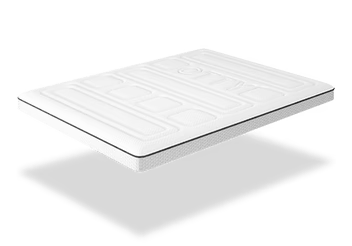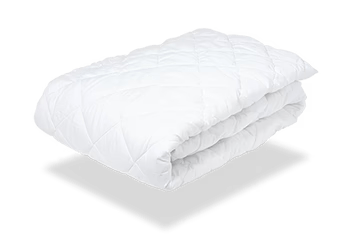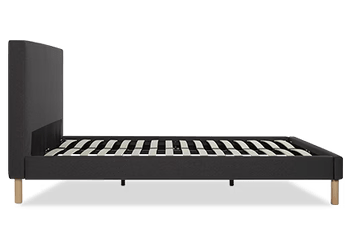
Ever wondered what goes inside your mattress that makes it so comfortable?
Or why some mattresses seem to hug your body while others feel like a rock?
Whether you're a fan of the traditional sprung system or the modern memory foam mattress, understanding the layers of a mattress can help you make an informed decision. After all, a good sleep depends on the mattress that's right for you.
The Three Most Common Layers in a Mattress
Top Comfort Layer
This layer is the first interaction between you and the mattress. It offers a plush, soft-top layer that provides immediate comfort, delivering a warm welcome as you settle in for a good night's sleep.
Middle Layer (Transition and Support Layer)
This is the supportive stronghold of your mattress. It's typically made of materials like latex or high-density foam. This layer ensures you enjoy the right balance of support and comfort, moulding to your body shape and responding to your body's pressure points.
Base Layer
This crucial bottom layer is typically composed of dense material, providing overall integrity, durability, and support for the rest of the mattress. It bears the weight and absorbs the shock, ensuring a good mattress lasts for years.
Some mattresses have additional layers which might include specific materials with unique properties, but we have found that on many occasions, the improvements in comfort or support are exponentially diminished in mattresses with many layers.
The Support Layer
The support layer is the foundation that upholds the comfort layers, ensuring your body weight is evenly distributed and your spine is correctly aligned.
Whether it's a traditional sprung system or a modern foam layer, the support core is integral to the overall performance of your mattress. It's the key to a supportive mattress that offers pressure relief and durability. Let's delve deeper into the two main types of support layers: springs and foam.
Springs
At the heart of a supportive mattress, you'll typically find a sprung system, specifically made of steel coil.
This system is great at dealing with weight distribution. It reacts to pressure, providing an immediate return. This ensures ultimate comfort combined with the promise of pressure relief. Steel coils create a surface responsive to your body, inviting restful nights and wakeful mornings.
However, the level of comfort you experience will largely depend on the mattress in question, more specifically on the spring-type used. Prime among these are the pocket sprung. These individually enclosed springs up the ante of comfort and support, as each coil operates independently.
Our 400 Pocket Sprung mattress is a prime example of a mattress using springs for extra comfort
Foam
The second part of mattress core materials is the foam layer. This isn't the soft foam you're picturing - we're talking about a high density, sturdy type known as reflex foam. A mattress built like this provides a firm, supportive base that creates a restful environment for your body.
One of the many advantages of foam is that it's generally hypoallergenic. This means it has the power to obstruct dust mites from settling in, making it a sensible choice for allergy sufferers. The absence of springs also bestows on foam, a slightly lighter weight. Such a quality makes it much easier to manoeuvre and flip as required.
Inside the mattress, the foam based support core plays a key role in pressure relief. It contours to the body, providing the perfect harmony between support and comfort- a quality we all desire.
The Comfort Layer
The comfort layer of a mattress is a crucial component that significantly influences your sleep quality. It's not just about the softness or the cushioning effect, but also about the materials used and their unique properties. This layer, often made from memory foam or natural materials, plays a pivotal role in providing overall comfort and pressure relief, enhancing your sleep experience.
Memory Foam - For Pressure Relief and Comfort
Given the importance of a good night's sleep, the comfort layer of a mattress takes centre stage. As the name suggests, the "comfort layer" is crucial for overall comfort during sleep. One material prevalent in this layer is the memory foam.
Memory foam, a type of dense foam, revolutionizes the comfort game. Distinguished for its ability to conform to your body shape, it offers unparalleled pressure relief. As you settle down for sleep, the memory foam in the mattress yields around your body, contouring to your unique figure and evenly distributing your weight.
This relief from pressure points is a significant factor behind why many opt for a foam mattress or a memory foam mattress.
Memory foam is also one of the most durable of mattress materials.
Natural Materials
The comfort layer plays a vital role in creating a healthy sleep environment, made possible by the usage of natural materials.
Among the assortment of materials, plant fibres stand out. Known since ancient times, plant fibres offer high durability and better breathability. They foster good air circulation around your body throughout the night, keeping your sleep environment cooler, an essential for a good sleep.
If you think about the overall comfort, nothing can compare to wool. Mattresses with wool are suitable for all types of weather thanks to their temperature-regulating features and the added padding augments the comfort level, improving your sleep experience.
The Cover Layer
The cover layer of a mattress is more than just a protective shell; it's the final touch that can significantly enhance your sleeping experience. This top layer, often overlooked, plays a crucial role in the overall comfort and functionality of your mattress.
Whether it's a natural mattress with a damask cover or a foam mattress with a knitted one, the cover layer can add a special feature to your mattress type.
Different Types of Mattress Covers
When it comes to what's inside your mattress, the final touch in the form of the cover layer can't be overlooked. Here's a quick breakdown:
Knitted Covers
A cosy option that moves with memory foam or latex layers, offering excellent breathability due to their open-weave structure.
Quilted Covers
These are stitched to the comfort layer, creating a pattern while providing an ultra-soft finish.
Tufted Covers
Ensuring mattress fillings remain in place, they also provide a slightly firmer feel, supporting your body effectively.
Summary and Key Takeaways
From the supportive core to the comfort layer, each component plays a crucial role in ensuring a good night's rest. Whether you prefer the traditional feel of a sprung system or the modern comfort of memory foam, understanding what goes inside a mattress can help you make an informed decision when purchasing a new one.
Remember, the right mattress for you depends on your individual sleep needs and preferences.
